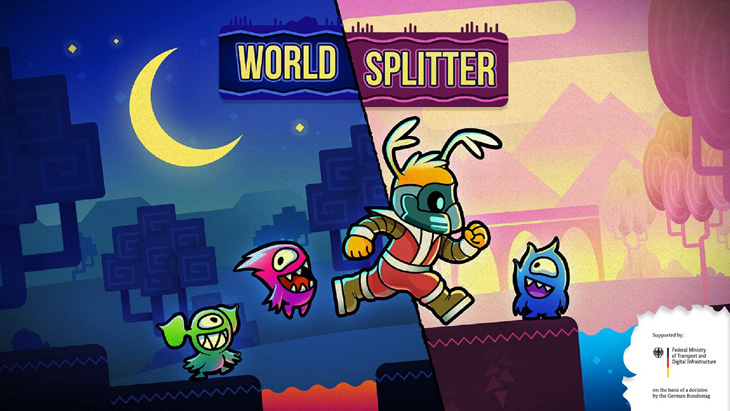
Graphics aren’t the most important part of a game. Fun and creative gameplay can easily compensate for lacking graphics, and the popularity of the free games during the heyday of Flash are a testament to this.
World Splitter is a creative puzzle platformer with simple cartoonish graphics that might be more at home on Newgrounds than in a full retail release. But like the Flash games before it, creative gameplay are at the forefront of the game’s design.
But is there a demand for simple puzzle platformers? Is there a market for it? Can a creative idea carry a game for six worlds and dozens of stages?
World Splitter
Developer: Neobird
Publisher: Bumble3ee Interactive
Platforms: Windows PC (Reviewed), Nintendo Switch, PlayStation 4, Xbox One
Release Date: April 21, 2021
Players: 1-2
Price: $19.99 USD
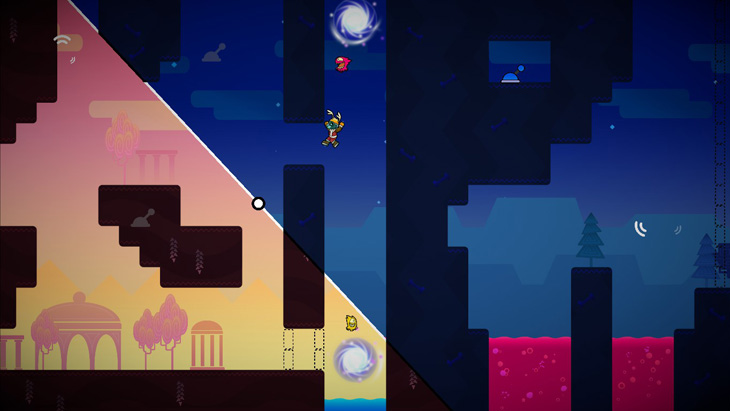
World Splitter is the latest game from developer Neobird, whose previous titles include Idle Kingdom Builder and Infinite Dronin. Players take on the role of a spacefaring humanoid with antennae who crashlands on a planet. The inhabitants, little gremlin-like creatures, steal the spacefarer’s device that can control dimensional travel.
Luckily the spacefarer still has his own tools, and can traverse dimensions to capture the beasties. Each stage is about not only traveling from one end to the other, but also collecting all the little monsters.
Changing dimensions is controlled by the mouse, which lets you sweep a line that splits the dimensions back and forth as you please. Each dimension offers differences in the level; and the line can help dictate where there are platforms, walls, enemies, and little aliens to find. The mouse buttons also will rotate the line around its axis for further control.
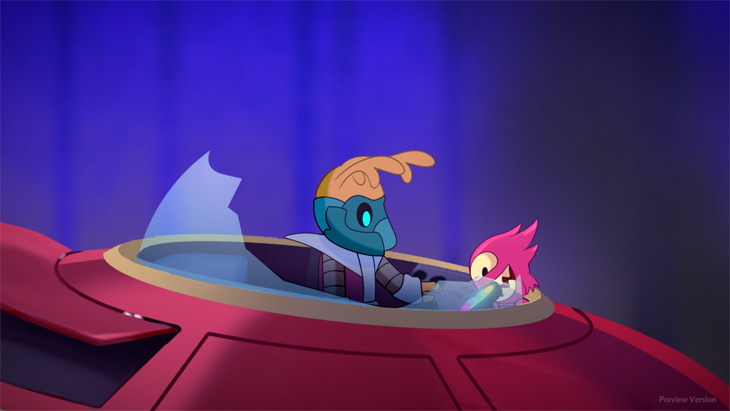
Mastering the dimensional line and using it to raise yourself up, clear paths, and make platforms is the key element of World Splitter. It makes for a creative, if a little unintuitive, method of puzzle solving. I say unintuitive, because it’s very easy to get turned around and accidentally crush yourself in a wall, even after hours of play.
Over the different worlds, the game introduces more and more mechanics to put new spins on the puzzle solving. These gimmicks are frequently a good addition with one notable exception: the spiked ball enemies.
The spiked ball enemies are a useful tool, and at their best when they’re used as dynamic moving hazards, or as a way to discourage dragging your dimensional rift over a certain bit of terrain. But in stages where they exist as just enemies that need to be shoved around or gimmicked around, it cheapens the puzzle solving elements of the game’s level design.

Some stages make good use of them though, one stage in a later world has a “treadmill” of enemies, and you have to run in the gap between them and time your movements. Another keeps the enemies in earthen boxes, and the goal is to solve the stage without freeing them, another good use. It’s only when the enemies exist to be a nuisance are they boring to encounter.
Other mechanics include platforms that can be turned on and off with levers, gravity wells where the spacefarer is shunted in different directions, and in the last world the two dimensions become four, adding a lot more chaos to the puzzles.
The level design and mechanics to shake things up makes a strong foundation for a puzzle-platformer like World Splitter. For fans of time trials, there’s a scoring system for both time, and dimensional angle.
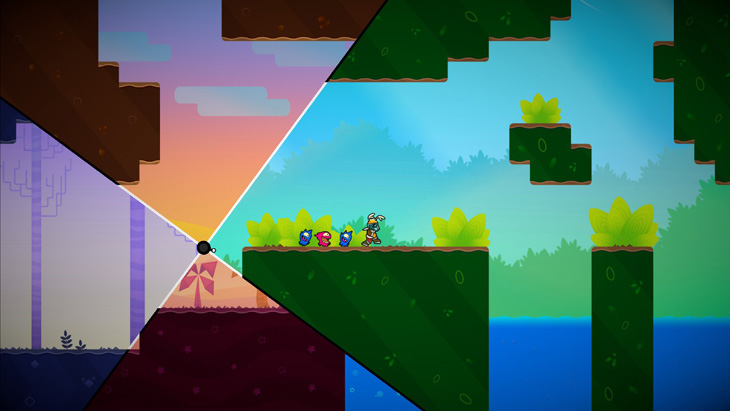
The former is obvious, the dimensional angle refers to how often you spin the dimensional rift around the axis, and is measured in degrees. Being able to solve a stage with as little rotating as possible is considered a good thing for scoring.
At the time of publishing there’s no global leaderboards for time, and perhaps that’s for the best when it comes to this game. World Splitter unfortunately lacks the kind of polish needed to create fair leaderboards. During a few stages I could inconsistently force the spacefarer through terrain by using the dimensional rift in a particular way.
This interaction appears to be unintentional as it’s simply glitching through the floor, and if these glitches are able to be reproduced consistently it would undermine potential leaderboards for time trials.
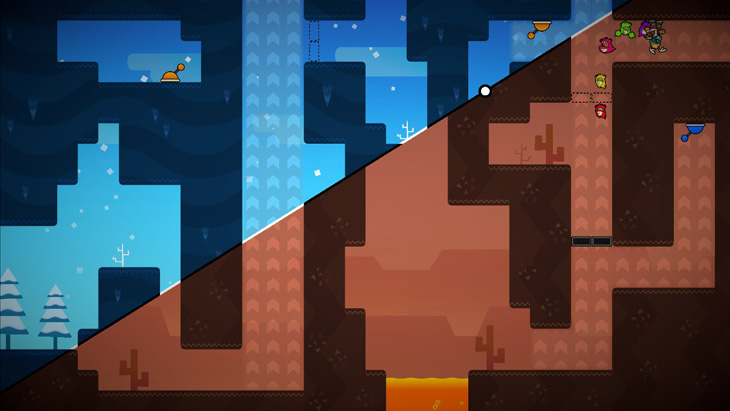
Other glitches include being stuck in a certain gravitational direction when interacting with that particular hazard. It happened at least twice, when two zones were near each other, forcing me to the screen’s edge. This effect persisted even when entering a gravity well in a different direction, or leaving it. I was forced to restart the stage twice due to this glitch after “falling” through the left side of the screen.
Glitches aside, World Splitter handles well. Learning to create ramps and using terrain as an elevator to solve puzzles is a rewarding feeling which leaves players feeling like they’ve begun to master dimension-hopping.
Music is more of an afterthought. It’s got some passable little ditties that sound like royalty-free music. Nothing in the soundtrack stands out as anything more than background noise, so you’re not puzzle solving in a soundless void.
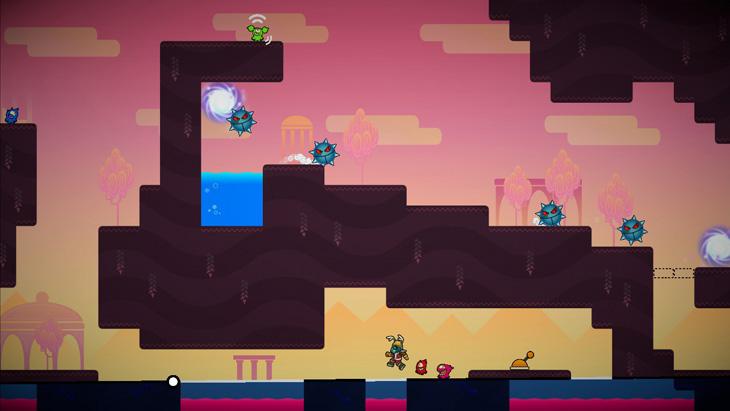
Ultimately, World Splitter is a game that should be taken at face value. It’s a creative puzzle-platformer that’s rough around the edges. Six worlds and a couple dozen stages that can all be completed in under 6-8 hours if you’re clever.
It’s a fun diversion, and those who enjoyed the Flash games of yesteryear will find World Splitter to be a comfort. But for those expecting a little more for a full game will be left wanting.
World Splitter was reviewed on Windows PC using a review code provided by Bumble3ee Interactive. You can find additional information about Niche Gamer’s review/ethics policy here.